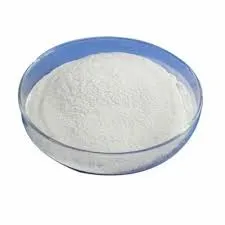
Novemba . 15, 2024 19:46 Back to list
hydroxyethyl cellulose manufacturing process
Hydroxyethyl Cellulose Manufacturing Process An Overview
Hydroxyethyl cellulose (HEC) is a non-ionic, water-soluble polymer derived from cellulose, which plays a crucial role in various industries, including pharmaceuticals, cosmetics, food, and construction. Due to its thickening, binding, and film-forming properties, HEC serves as an essential ingredient in many formulations. Understanding the manufacturing process of HEC is vital for industries that rely on this versatile polymer.
Raw Materials
The production of hydroxyethyl cellulose begins with the raw material cellulose, which is sourced from natural plant fibers such as wood pulp or cotton. The cellulose is subjected to a process known as alkaline treatment, where it is treated with sodium hydroxide (NaOH) to increase its reactivity. This treatment ensures that the cellulose chains are sufficiently modified to allow for subsequent etherification.
Etherification Process
The key step in the manufacturing process of hydroxyethyl cellulose is the etherification stage. In this process, the activated cellulose is reacted with ethylene oxide in the presence of alkaline conditions. Ethylene oxide is a cyclic ether that opens in the presence of hydroxyl groups on the cellulose chain, effectively adding hydroxyethyl groups to the cellulose backbone. This reaction can be controlled by adjusting parameters such as temperature, pressure, and reaction time, allowing manufacturers to produce HEC with varying degrees of substitution, which ultimately affects its solubility and viscosity.
Neutralization and Purification
Once the etherification reaction has reached the desired conversion level, the resulting hydroxyethyl cellulose is neutralized to halt the reaction
. This is typically achieved by adding an acidic solution, which neutralizes any excess NaOH and removes any unreacted ethylene oxide.Following neutralization, the HEC solution undergoes several purification steps to remove impurities and by-products from the reaction. Common purification techniques include filtration to remove particulates, precipitation to isolate the HEC, and washing to eliminate any residual reactants. The purification process is critical, as it ensures that the final product meets industry standards for purity and performance.
Drying and Milling
hydroxyethyl cellulose manufacturing process

After purification, the hydroxyethyl cellulose must be dried to achieve the desired moisture content and to convert the solution into a powder form for easy handling and transportation. This is typically done using spray drying or drum drying techniques.
Once dried, the HEC is then milled to achieve the desired particle size. The milling process can help improve the solubility of HEC when it is incorporated into end-use products. The final particle size can significantly affect its performance in various applications, and manufacturers may adjust milling techniques to achieve optimal specifications.
Quality Control
Quality control plays a vital role in the manufacturing process of hydroxyethyl cellulose. Various physical and chemical tests are conducted to ensure conformity to specifications. Parameters such as viscosity, degree of substitution, and particle size distribution are rigorously evaluated to guarantee product efficacy and consistency. Advanced analytical techniques, including viscosity measurements and infrared spectroscopy, are commonly employed in quality assurance.
Applications of Hydroxyethyl Cellulose
The unique properties of hydroxyethyl cellulose make it suitable for an array of applications. In the pharmaceutical industry, it is used as a thickener and stabilizer in gels and ointments. HEC is also utilized in cosmetic formulations, including shampoos, lotions, and creams, where its emulsifying properties enhance product stability.
In construction, HEC serves as a crucial additive in cement-based materials, improving workability and water retention. Additionally, in the food industry, HEC is used as a thickening and stabilizing agent in sauces, dressings, and other processed foods.
Conclusion
The manufacturing process of hydroxyethyl cellulose involves several critical stages, from the initial raw material treatment to the final quality control assessments. Each step is designed to ensure that the resulting HEC meets the stringent requirements of various industries. As technological advancements continue to evolve, the efficiency and efficacy of HEC production will likely enhance, reinforcing its significance across numerous applications. Understanding this manufacturing process not only highlights the complexities involved but also emphasizes the importance of HEC in everyday products that consumers rely on.
-
Versatile Hpmc Uses in Different Industries
NewsJun.19,2025
-
Redispersible Powder's Role in Enhancing Durability of Construction Products
NewsJun.19,2025
-
Hydroxyethyl Cellulose Applications Driving Green Industrial Processes
NewsJun.19,2025
-
Exploring Different Redispersible Polymer Powder
NewsJun.19,2025
-
Choosing the Right Mortar Bonding Agent
NewsJun.19,2025
-
Applications and Significance of China Hpmc in Modern Industries
NewsJun.19,2025







